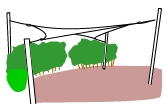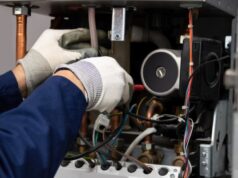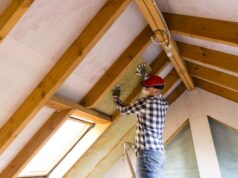
Sail pergolas are a type of pergola that incorporates a stretched sail suspended between posts as the main roofing structure. These types of pergolas offer a sleek, modern look.

What is a sail pergola?
Though they’re not technically pergolas in the truest sense of the word, canvas, polyethylene and PVC sail pergolas have become more and more popular in recent times, and are now a regular feature in backyards across the country. Sail pergolas (often called shade sails or sail shades) consist of a large sail which is stretched taut between several poles placed at different heights. This lends the sail shape and form as a roof, allowing many different variations in terms of shape and style.
There is a massive range of colours available to suit any backyard, and sail pergolas can also be sold as DIY kits. Because they’re required to be very strong though, it’s important that you know what you’re doing if you’re going to erect your own.
Depending on your situation too, it may be more aesthetically pleasing to put up a number of smaller shade sails instead of one large one.
What are the benefits to sail pergolas?
Most commercially sold sails will offer over 90% UV protection, depending on the colour chosen. Sails will not fully block out all the light like a solid roof would, and the light that passes through will bear the colour of the sail.
Sail pergolas are relatively easy to install, and installation can be completed in an afternoon, leaving you all night to enjoy a barbecue underneath it. They are also relatively affordable in comparison to other pergolas, in that they require much less in the way of materials. The material chosen for the sail will affect a number of things – protection offered, maintenance required and cost effectiveness to name a few, so you will need to identify what you want most from a sail pergola when you choose.
How are sail pergolas constructed?
Several large hooks are placed at key locations and at different heights which act as fixing points. Posts will likely have to go up to accommodate these, though trees can also be used – steel poles may be necessary for large sails so bear this in mind when you’re doing your planning.
The sail is threaded around the outside with stainless steel wire, which is then swaged to the hooks with turnbuckles. This allows for a little give and flexibility when the wind blows while keeping the overall shape intact. The sails are usually heavier than they look, so you may need assistance with lifting them if you are installing this kind of structure yourself.
Before installing or purchasing anything, it’s a good idea to check with your local council about any relevant building permits that might be required. This advice applies for any structure you intend to put up on your property. Likewise, make sure you understand how much tension your supports will need to be able to handle (especially in a strong wind).
What sorts of problems exist with sail pergolas?
There are relatively few problems with these types of pergolas; they are so uncomplicated, there’s not a great deal of room for anything to go too drastically wrong. They can catch the wind unnecessarily in unprotected areas and prolonged strain on the sail can cause tearing over a long period of time. These sails are typically designed by a qualified sailmaker though, so provided that they’re assembled with strong enough supports, they should last for quite some time.




